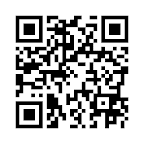知っていますか「肺年齢」
肺年齢そのものの概念は1985年に提唱されていたらしい.
最近注目度が上がって生きている印象です.「1秒量(FEV1)」と「努力肺活量(FVC)」の数値があれば計算が出来ます.
ここ.
何故,僕が注目するようになったか.肺年齢を知らせるだけで禁煙率が倍になるからです.
Parkes G, Greenhalgh T, Griffin M, Dent R. Effect on smoking quit rate of telling patients their lung age: the Step2quit randomised controlled trial. BMJ. 2008 Mar 15;336(7644):598-600.
OBJECTIVE: To evaluate the impact of telling patients their estimated spirometric lung age as an incentive to quit smoking. DESIGN: Randomised controlled trial. SETTING: Five general practices in Hertfordshire, England. PARTICIPANTS: 561 current smokers aged over 35. INTERVENTION: All participants were offered spirometric assessment of lung function. Participants in intervention group received their results in terms of "lung age" (the age of the average healthy individual who would perform similar to them on spirometry). Those in the control group received a raw figure for forced expiratory volume at one second (FEV1). Both groups were advised to quit and offered referral to local NHS smoking cessation services. MAIN OUTCOME MEASURES: The primary outcome measure was verified cessation of smoking by salivary cotinine testing 12 months after recruitment. Secondary outcomes were reported changes in daily consumption of cigarettes and identification of new diagnoses of chronic obstructive lung disease. RESULTS: Follow-up was 89%. Independently verified quit rates at 12 months in the intervention and control groups, respectively, were 13.6% and 6.4% (difference 7.2%, P=0.005, 95% confidence interval 2.2% to 12.1%; number needed to treat 14). People with worse spirometric lung age were no more likely to have quit than those with normal lung age in either group. Cost per successful quitter was estimated at 280 pounds sterling (366 euros, $556). A new diagnosis of obstructive lung disease was made in 17% in the intervention group and 14% in the control group; a total of 16% (89/561) of participants. CONCLUSION: Telling smokers their lung age significantly improves the likelihood of them quitting smoking, but the mechanism by which this intervention achieves its effect is unclear. TRIAL REGISTRATION: National Research Register N0096173751.
こちらで要点をまとめてくれているのでそこから抜粋.
英国の5つのGPの診療所でリクルートした35歳以上の喫煙者561名
全員に呼吸機能検査を実施,
ランダム化して,片方にはFEV1(1秒量)の生の数字(対照群)を,一方にはそこから計算される「肺年齢」を告げ(介入群),療法共に禁煙外来を紹介.
プライマリアウトカム:1年後の禁煙率測定(唾液のコチニン濃度で確認)
2次アウトカム:報告による喫煙量.新たなCOPDの診断
結果
1年後の禁煙率 13.6% (介入群)vs 6.4% (difference 7.2%, P=0.005, 95% confidence interval 2.2% to 12.1%; number needed to treat 14)
新たなCOPDの診断 17%(介入群) vs 14%
肺年齢が酷い方が止める確率が高いが,肺年齢に以上がない人達に限っても,肺年齢を告げられた方が止める率が高い
1名の禁煙成功者に約 366 euros, $556
補足
ベースラインデータ
平均1秒量率 FEV1%=74%
殆どは禁煙に関して準備期になかった
肺機能異常者の割合 23.5% vs 26.8% (介入群)
-------------------------
TPOV(teaching point of view/take home message)
肺年齢を追加するだけで禁煙率が上がる
それでも禁煙の成功率は14%程度
新たなCOPDの診断が1年で10%台
補足:研究者の一人Greenhalgh Tは英国では超高名な家庭医.さすがの研究内容だと思います.
肺年齢のサイトは有用なブックマーク集>「予防,健康維持」>「リスク計算」に入れてあります.








